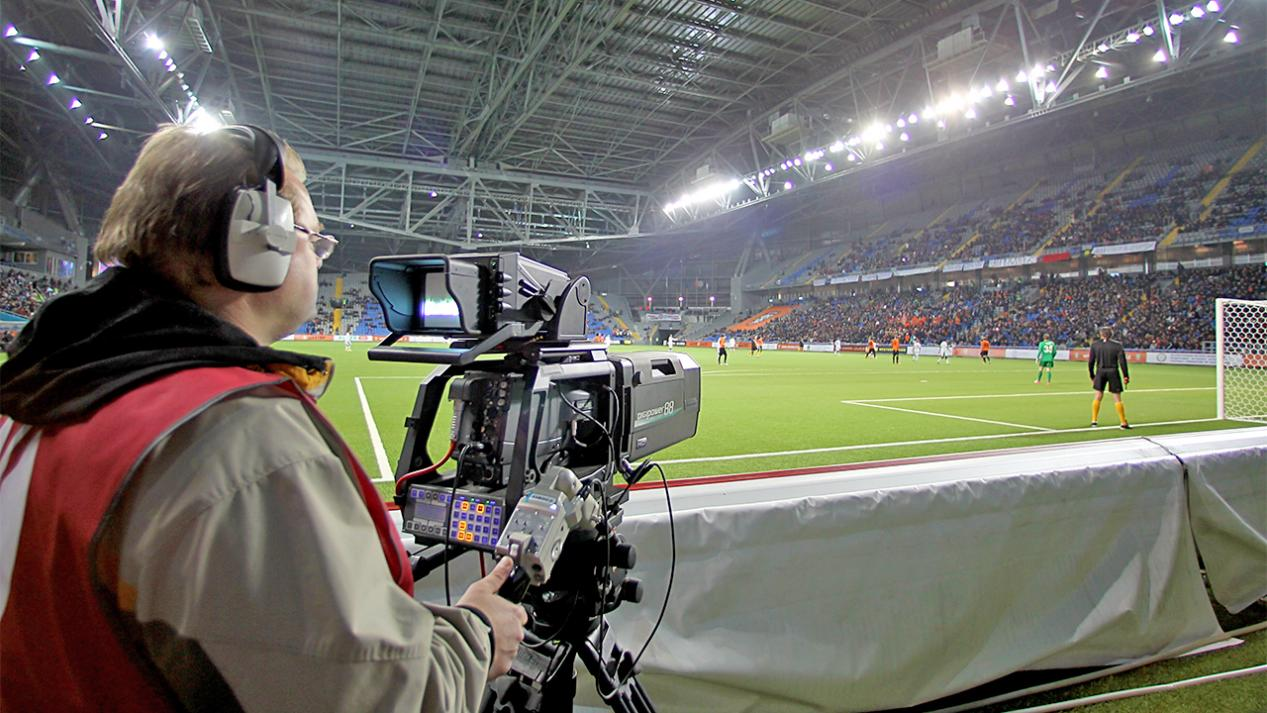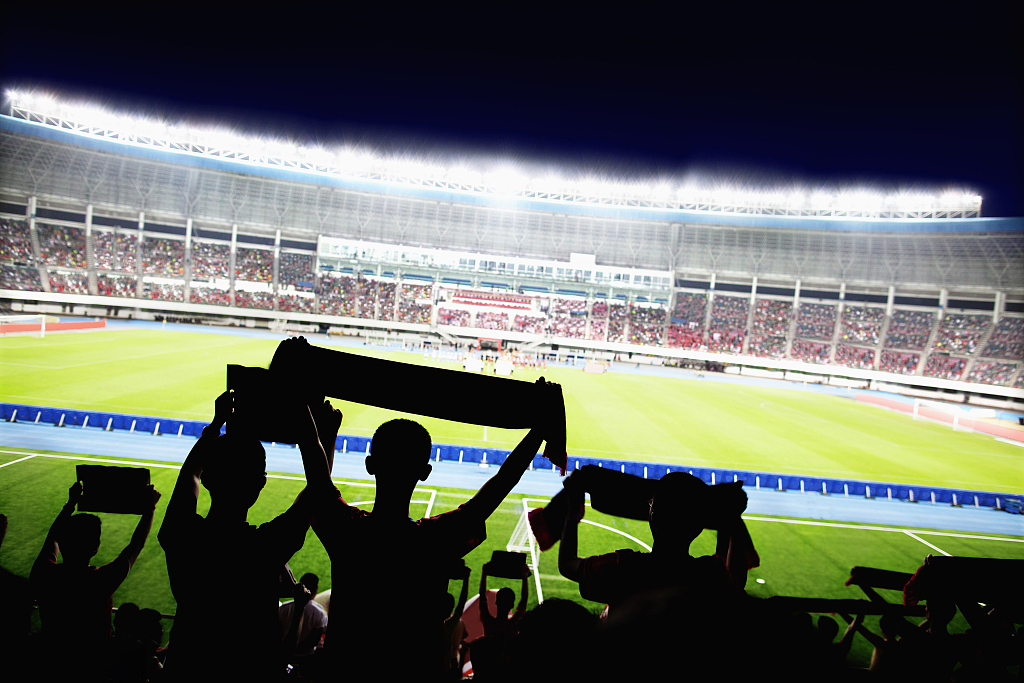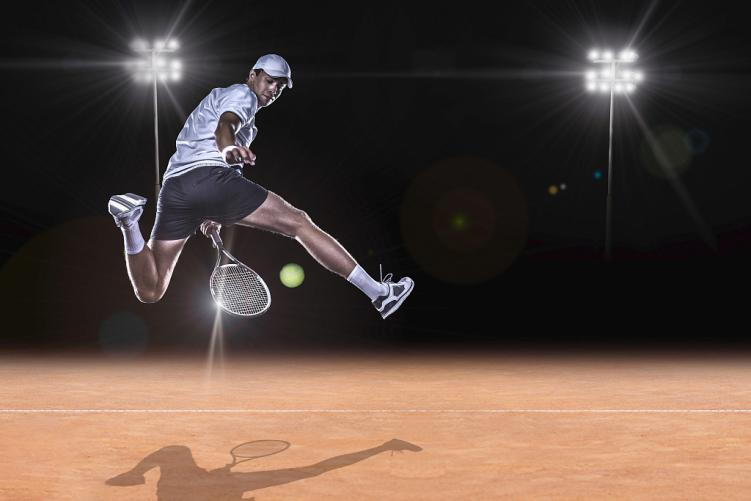How to play the role of stadium lighting design more fully, we need to understand the specific reference standards and requirements of stadium lighting design. Including illumination, color temperature, color rendering, glare control, etc., must be carefully considered and implemented.
Illumination requirements
Taking a football field as an example, according to the 83rd document of the International Federation of Sports, the recommended illuminance for stadiums and the regulations in the "Lighting Design Standards for Civil Buildings" GBJ133-90, our illuminance level for football stadiums should meet the following requirements:

1. Taking football field lighting design as an example, according to Article 2.2.9-1 of "Lighting Design Standards for Civil Buildings" GBJ133-90: the standard value of illuminance for football field games: when the viewing distance is 120m, the illuminance should reach 150~ 200~300lx; when the viewing distance is 160m, the illuminance needs to reach 200~300~500lx; when the viewing distance is 200m, the illuminance value is required to be 300~500~750lx. The viewing distance refers to the distance from the last row of the auditorium to the sideline of the venue.
2. For the live broadcast of sports programs, the vertical illuminance of TV broadcasts should also be considered. According to Article 2.2.9-2 of "Lighting Design Standards for Civil Buildings" GBJ133-90, the vertical illuminance required for TV broadcasting: the maximum shooting distance is divided into three groups:
a. For football events, when the maximum shooting distance is 25m, the average vertical illumination should reach 750lx;
b. When the maximum shooting distance is 75m, the average vertical illuminance is required to reach 1000lx;
c. When the maximum shooting distance is 150m, the average vertical illuminance is required to reach the level of 1500lx.
Among them, since many stadiums share a venue for football and track and field events, additional requirements are required for track and field events: when the maximum shooting distance is 25m, the average vertical illuminance is required to reach 500lx; when the maximum shooting distance is 75m, the average vertical illumination The illuminance is required to reach 750lx; when the maximum shooting distance is 150m, the average vertical illuminance value is required to reach 1000lx.
Remarks: The vertical illuminance requirements mentioned above are used for a given sports level and the value of the given optimal shooting distance relative to the 1.0m vertical plane, and the intermediate value of each illuminance value is applicable. at other shooting distances.
3. The above illuminance refers to the final average illuminance of the stadium. When doing lighting design, we need to add a maintenance coefficient, usually a coefficient value between 0.7 and 0.8.
4. The uniformity of horizontal illuminance: the uniformity of illuminance is generally expressed by the ratio of the minimum illuminance to the maximum illuminance, and can also be expressed by the ratio of the minimum illuminance to the average illuminance. The ratio of the minimum illuminance to the maximum illuminance should be greater than 0.5. In addition, we also need to pay attention to the vertical illuminance uniformity of the venue: the ratio of the minimum illuminance to the maximum illuminance should be greater than 0.4 to meet the requirements of the main TV camera.

Lighting quality
1. Glare control
Because the stadium space is relatively large, there are many participating groups, including athletes and referees, as well as spectators, field affairs, etc. Therefore, when designing stadium lighting, we must pay attention to the control of glare in each space. In this way, a good lighting effect can be achieved, the athletes can better play their competitive level, and at the same time, the spectators can fully see the details of the game.
According to the CIE NO.83 publication "Sports Field Lighting for Color TV Systems", the maximum glare index GRmax in the field should be less than 50. The lower the glare rating GR, the better the glare control, with a glare rating of 50. The glare rating GR can be calculated using the following formula:
GR=27+24Lg, Lvl/Lve 0.9 1 In the formula, Lvl is the brightness of the light curtain generated by the lamp, and Lve is the brightness of the light curtain generated by the environment. The two should be treated separately. When we calculate the illuminance of the venue, we must remember to take the glare values in different directions into account. Only when the rated value GR<50, the overall scheme can also run.

Of course, there are many ways to limit glare, such as choosing a reasonable type of lamps, adjusting the installation height, angle, and arrangement of lamps, and you can also "reduce" glare by brightening the background of the arena.
2. Light source color temperature and color rendering standard
In order to achieve better viewing and TV broadcast effects, the quality of stadium lighting is not only about the illuminance, but also the color temperature and color rendering. When the illumination reaches the standard, it can only allow us to "see clearly", and when the color temperature and color rendering meet the standard, it can allow us to "see well".
According to the provisions of Article 3.3.2 of my country's "Lighting Design Standards for Civil Buildings" GBJ133-90: For general light sources used for color TV broadcasting, the color rendering index Ra should not be less than 65. In addition, according to the CIE NO.83 publication and the requirements of FIFA, the light source color temperature Tc is greater than 5000K, and the color rendering index is greater than or equal to 80. That is to say, in the lighting design of stadiums, the color temperature of the light source should be higher than 5000K, and the color temperature should be at least Ra>65.
3. The directionality of the light
As mentioned earlier, the control of glare has a lot to do with the directionality of the lighting. But at the same time, the depression angle of the lamp can also change the vertical illuminance. Therefore, when designing the stadium lighting, it is necessary to control the illumination direction of the lamps. In addition, the ratio of the main camera and the light coming from the other side should be controlled within a certain range, and the area of accent lighting is still the center of the court.

The electricity used for lighting in stadiums is commercial electricity, and the power consumption of the entire stadium is very large. The electricity bill for a day may sometimes cost several thousand yuan. Therefore, energy-saving issues must be considered in the lighting design of stadiums.
For energy saving, what a lighting design company can do is to formulate a reasonable lighting scheme, select efficient luminaires, reduce line losses, and design a good lighting control system.
When choosing lighting fixtures for colleges and universities, we should set up reasonable, multiple switch modes and corresponding control schemes to flexibly adjust for different sports.
Moreover, these factors must be fully considered at the beginning of the design, otherwise it will be difficult to remodel later.
Post time: Feb-25-2022

